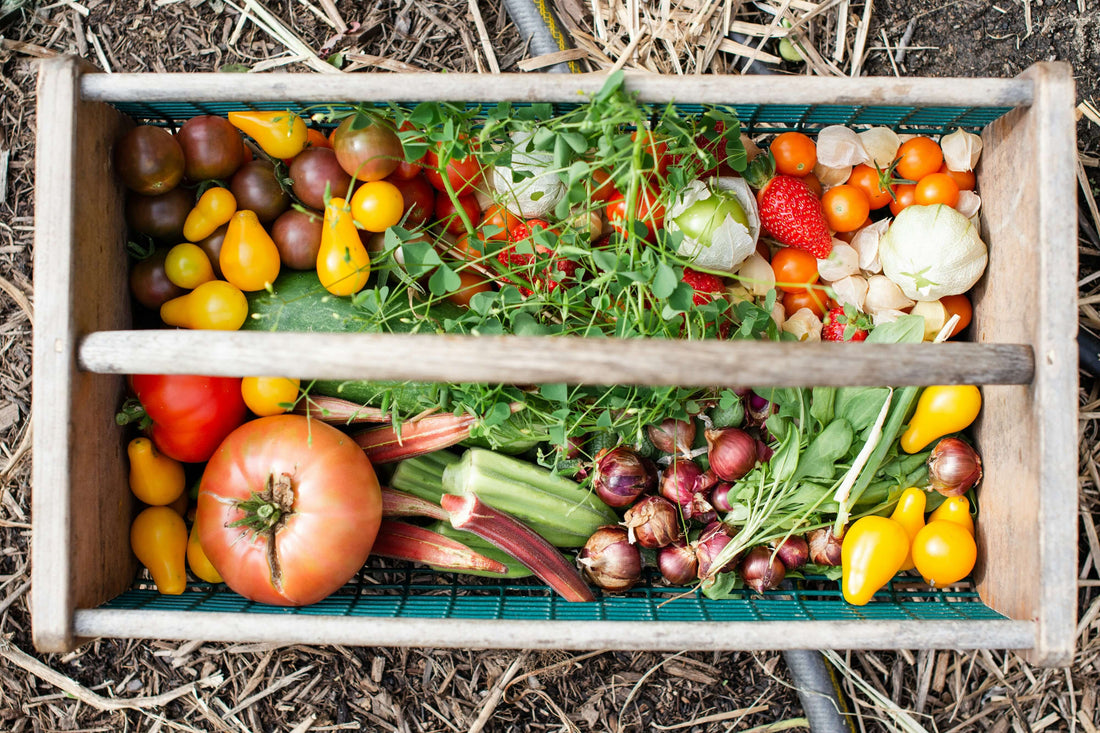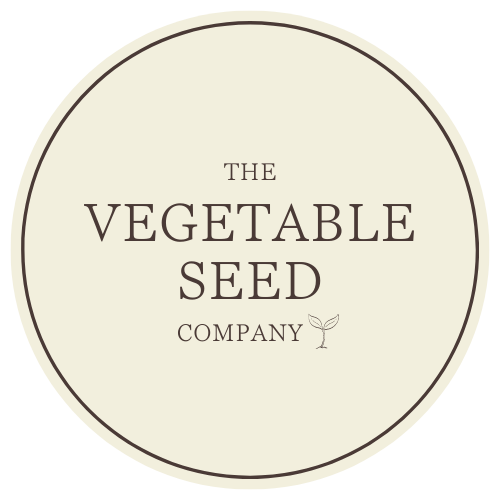
Vegetable Planting Calendar: When To Plant Vegetables
Share
Whether gardening is just a hobby, or you're seasoned expert - an essential part of your vegetable growing journey is planning the growing season.
You can plant garlic, spring onions, Brussel Sprouts and broad beans with our planting calendar! And when your Vegetable garden is planned properly, you can make the most out of it and enjoy the flurry of vegetables you have.
From winter crops to early spring crops, our Vegetable Calendar has all the information you need to keep your vegetable patch thriving all year round!
January to February
Winter is not the perfect time to plant vegetables, but it is the time to start planning for the year ahead. (And there is some indoor sowing you can do to get your planting fix!)
If you've grown vegetables in previous years - make a note of vegetables that thrived to help with your decision on what to grow this season.
With this information, and looking at what grows best in your climate, create a plan of what you want to grow, and sowing dates, for the season ahead. If you're feeling brave, use this time to think about what challenging vegetable you'd like to grow this year!
Seeds To Sow Indoors
Spring Onions

Start sowing onion sets and Spring Onion seeds inside in seed trays and transplant them when the weather becomes warmer. These are hardy seeds, so they're a great one to start early.
Tomato Seeds
Start under growing lights or on a sunny windowsill. Tomatoes have a long growing season - and this will help give them a head start!

Plant Potatoes
For a very early crop, plant potatoes in a grow bag under cover.
Broad Beans
Although usually sown directly outside later in the year, you can get a head start on this vegetable and start them indoors during the winter.
To Harvest
-
Brussels Sprouts
-
Celeriac
-
Kale
-
Leek
-
Parsnips
-
Spinach
-
Swedes
Tips for Winter Planting
Always use seed trays that have a good drainage system as water logging can lead to root rot and other diseases.
Indoor seedlings need a lot of light - so if you don't get much natural light, it might be worth investing in a grow light to help them thrive.
Keep your seeds and seedlings in a warm spot (around 18 to 22 degrees) this will help encourage germination and growth.
March to April
Spring is a vibrant time for your vegetable garden as you transition from winter's rest to the active growing season.
This period is ideal for planting hardy vegetables and preparing your garden beds for warmer crops.
Seeds To Sow Indoors
Peppers

Like tomatoes, peppers benefit from an early start. Sow seeds indoors in pots or trays, and provide ample light and warmth to encourage strong seedlings. Peppers have a long growing season, so early sowing is essential.
Herbs
Indoor herbs like basil, parsley, and chives can be started now. They will thrive on a sunny windowsill or under grow lights, providing fresh flavours throughout the growing season.
Seeds To Sow Outdoors
Potatoes

Early varieties of potatoes can be planted as soon as the soil can be worked. Prepare your garden beds, and plant seed potatoes about 12 inches apart. Cover with soil and mulch to protect from frost.
Onions (from Sets)
Plant onion sets directly into the soil once it has warmed up slightly and the last frost date has passed. Onions can handle cooler temperatures and will start growing quickly as the weather warms.
Leeks
Leeks are hardy and can be sown directly outdoors or started indoors for an earlier start. Transplant them to their final position once they are large enough.
To Harvest
-
Spring Cabbage
-
Spinach
-
Chard
Tips for Spring Planting
Ensure your garden soil is well-drained and enriched with compost. Good soil preparation supports healthy plant growth and better yields.
Use cloches or fleece to protect young seedlings from late frosts and help them establish.
Spring weather can be unpredictable, so keep an eye on soil moisture and water plants as needed to support their growth.
May to June
As temperatures rise, focus on planting summer crops and managing the growth of your garden throughout May to Late June. This period is crucial for setting up your summer harvests.
Seeds To Sow Outdoors
Beans
Directly sow bean seeds outdoors once the risk of frost has passed. Beans thrive in warm weather and will grow quickly.
Corn
Corn needs a warm growing season. Sow seeds directly into well-prepared soil, spacing them adequately to allow for proper growth.
Cucumbers

Plant cucumber seeds directly outdoors after the last frost. They require warm soil and ample sunlight to grow effectively.
Squash (Summer)
Sow summer squash seeds directly in the garden. Squash plants spread out, so ensure you provide enough space.
Crops Indoors
Brassicas (Broccoli, Cauliflower)
Start brassicas indoors to give them a head start before transplanting outdoors. They need a long growing season to mature properly.
To Harvest
-
Radishes
-
Lettuce Plants
Tips for Summer Planting

Ensure proper spacing between plants to allow for air circulation and prevent overcrowding, which can lead to disease.
Apply mulch around plants to retain moisture, suppress weeds, and maintain soil temperature.
Monitor for pests and diseases, and take action as needed to protect your crops.
July to August
During the height of summer, focus on harvesting your crops and preparing for the next season. Continue planting for an extended harvest and manage your garden efficiently.
Seeds To Sow Outdoors
Autumn Brassicas (Kale, Winter Cabbage)
Sow seeds for winter-hardy brassicas directly into the soil. These will mature in cooler weather, providing fresh greens in autumn and winter.
Beetroot
Direct sow beetroot seeds into the soil. Beetroots thrive in the cooler weather of late summer and early autumn.
Spring Onions
Sow spring onion seeds directly in the garden. They will mature over the coming months and be ready for early spring harvest.
To Harvest
-
Tomatoes
-
Courgettes
Tips for Peak Harvest
Keep up with harvesting to prevent over ripening and encourage further production.
Ensure plants receive adequate water, especially during hot, dry spells. Watch for signs of plant diseases and pests, and address issues promptly to protect your crops.
September to October
As summer wanes, begin preparing for autumn and winter. This is a crucial time for planting overwintering crops and ensuring your garden is ready for the colder months.
Seeds To Sow Outdoors
Garlic
Plant garlic cloves directly into the soil for an early summer harvest next year. Garlic requires a period of cold to develop properly.
Spring Onions
Sow spring onions for an early spring harvest. They will grow slowly through the winter and be ready for an early start next season.
Broad Beans
Sow broad beans in late autumn for an early summer harvest. They will overwinter and begin growing as the weather warms.
To Harvest
-
Brussels Sprouts
-
Celeriac
Tips for Autumn Planting
Apply mulch to protect the soil and help with weed control. This will also improve soil structure for next season.
Use cloches or fleece to protect overwintering crops from severe weather. Add compost to your garden beds to enrich the soil for the next planting season.
November to December
Winter is a time for reflection and preparation for the next gardening year. Focus on finishing harvests and planning for the future.
Seeds To Sow Indoors
Winter Herbs
Sow herbs like parsley and chives indoors. They can be grown on a sunny windowsill or under grow lights, providing fresh greens during winter.
To Harvest
-
Parsnips
-
Winter Leeks
Tips for Winter Preparation
Reflect on this year’s gardening successes and challenges. Update your planting calendar and make notes for improvements.
Clean and store tools, and prepare your garden beds for the next season by adding compost or other organic matter.
Start ordering seeds for the upcoming year. Choose varieties based on your previous experiences and new interests.
